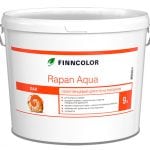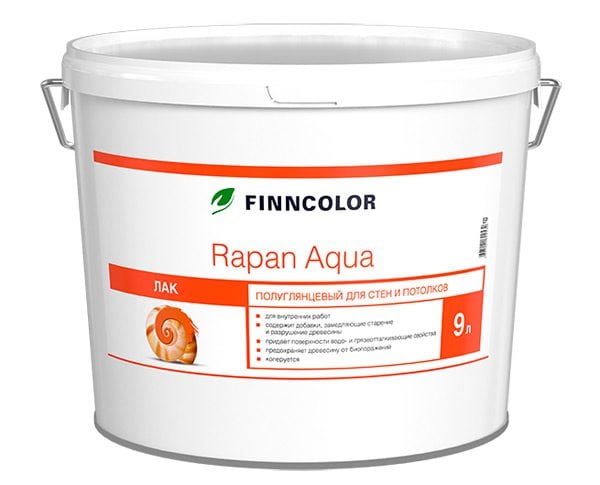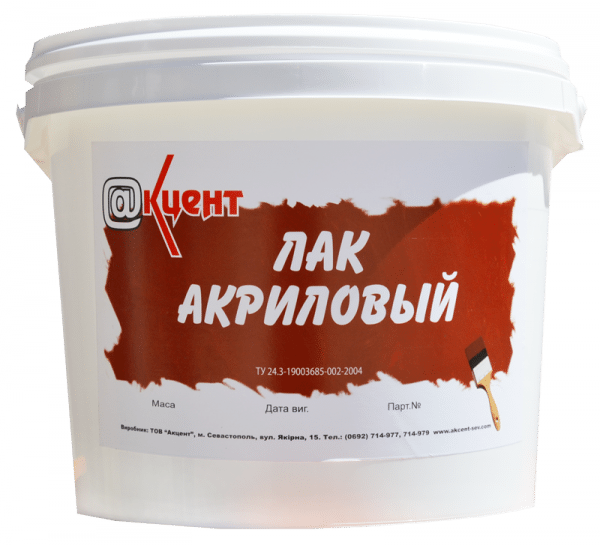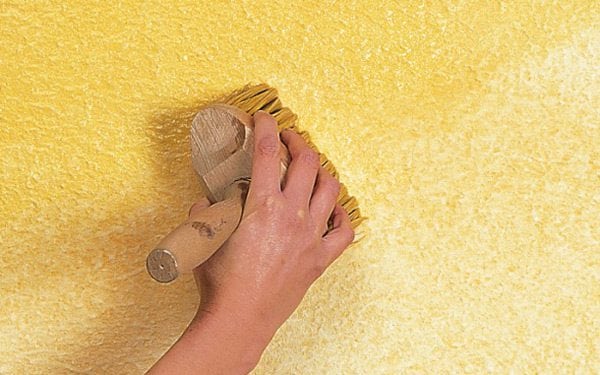To open the inner or outer surface of the walls of the building with varnish means not only to give a certain appearance, but, first of all, to provide additional protection to the base materials from the harmful effects of environments and destruction by time.
The market of paints and varnishes today offers a large selection of solutions that are applicable to perform various painting works. Wall varnish can be: craquelure, pearlescent, with sparkles or transparent, colorless or with pigment, matte and glossy, for painting brick walls and for wooden surfaces. Separate products are intended for processing products and surfaces made of metal and other materials.
In general, the market is so diverse that even the most demanding client will find a suitable composition to cover the walls inside or outside the house. Varnished surfaces:
- prevent the penetration of moisture deep into the materials of the base of the wall;
- protect from the influence of sunlight (that is, from fading and fading of color);
- Strengthen the structure of frame materials, preventing destruction under the influence of time;
- provide a certain level of protection against mechanical damage and exposure to chemicals;
- give a decorative look to the finish.
to contents ↑To properly coat the walls with varnish, you need to know which solutions should be used in a particular case, as well as how to do it technologically correct.
Choosing the right varnish
When shopping, you need to understand exactly what properties need varnish. If, for example, it is supposed to open the surface with varnish in the bathroom, then this should be a coating with high moisture resistance. And if painting in a children's room or in a bedroom is supposed, then it is necessary to choose the most non-toxic product. The type of base materials also affects the choice of decorative protective agent.
For indoor use (residential, non-residential, public), water-based solutions are considered the safest. Water-based acrylic composition is very in demand, despite not all having the right price.
Benefits:
- the composition does not include organic solvents, which makes the product environmentally friendly;
- lack of smell;
- creates a durable and flexible film on the surface;
- in the original, acrylic varnish is colorless, transparent, does not turn yellow over time, which does not affect the natural shade of the color of the base materials (especially wood);
- permissible tinting;
- according to the degree of gloss: high-gloss, glossy, semi-gloss, semi-gloss, matte;
- incombustibility;
- easy application (brush, roller, spray);
- quick interlayer drying;
- wide scope: for any wooden surfaces (including painted ones), brick and masonry, plastics, metal, etc.
Disadvantages:
- finish drying - day;
- the period of the final polymerization is too long - up to 2 weeks;
- susceptible to abrasion during heavy use of the premises (on wooden floors).
Water-based is not only acrylic varnish, but also polyurethane one-, two-component. In its application, a lot of advantages:
- lack of smell, non-toxicity;
- short drying time: 2-3 hours between layers, 8 hours - you can already walk in socks, 3-4 days - calmly bring furniture;
- uniform, simple application;
- good adhesive properties;
- strength, abrasion resistance, durability;
- resistance to chemical attack;
- universality of application.
But if you want to varnish the outer brick or wooden wall of the house, then it is better not to use water-based varnish (acrylic or other), since the protection will not last long. In this case, organic solvents are used, for example, alkyd. A significant drawback of such solutions is considered too long drying period. But with the addition of special hardeners, this process can be accelerated.
Such varnishes form a durable film that is resistant to various influences, including moisture. Light- and heat-resistant, well applied, almost transparent, have a nice appearance.
Based on organic solvents, there are other varnish compositions:
- nitro-varnishes;
- urethane group;
- oil varnishes;
- epoxy;
- bituminous.
Shellacs stand separately - natural types of varnishes, difficult to obtain, difficult to work, expensive, but having unique decorative properties.
to contents ↑
Decorative features of varnished surfaces
Basically, consumers require either a glossy gloss or restrained haze. This can be achieved with acrylic or polyurethane varnishing. But with the addition of various components, you can give the surfaces a completely unique decorative look.
For wooden surfaces, technologies of artificial aging, tinting, and enhancing texture depth are often used. What varnish can unusually open the walls?
- Craquelure varnish - creates on the plastered wall an imitation of a naturally aged cracked surface. The grid of cracks is obtained by two-layer application of varnish Crackle with additional patination patina.
- Pearl lacquer - used as a finishing decorative finish, creates a unique spectral effect of flicker. Available on an acrylic basis. Used to protect and decorate plaster, wallpaper for paintingmineral and wooden surfaces.
- Glitter varnish - available in the form of an acrylic mixture with glitters for surface finishing. A decorative additive can be purchased separately in a wide palette of colors. Thus, by mixing the components yourself, any paint mixture can be made with sparkles.
Whatever varnish you use to protect wooden and other surfaces inside and outside the house, be sure to adhere to the application technology and technical requirements when working. During the drying period of the varnish, certain rules should also be observed.
If you are not sure that you will cope with the task yourself, entrust it to professionals. Experts in matters of quality repair and construction will help to select the necessary materials, as well as perform everything at a high professional level.









Hello, I have a problem! primed decorative plaster 2 times painted and varnished, but after the varnish was painted, the stripes were light! applied with a paralon roller from top to bottom, I forgot that with chaotic movements it would be all normal, but still, can you advise something ???? I think to mix varnish with dye and apply again what you plant?